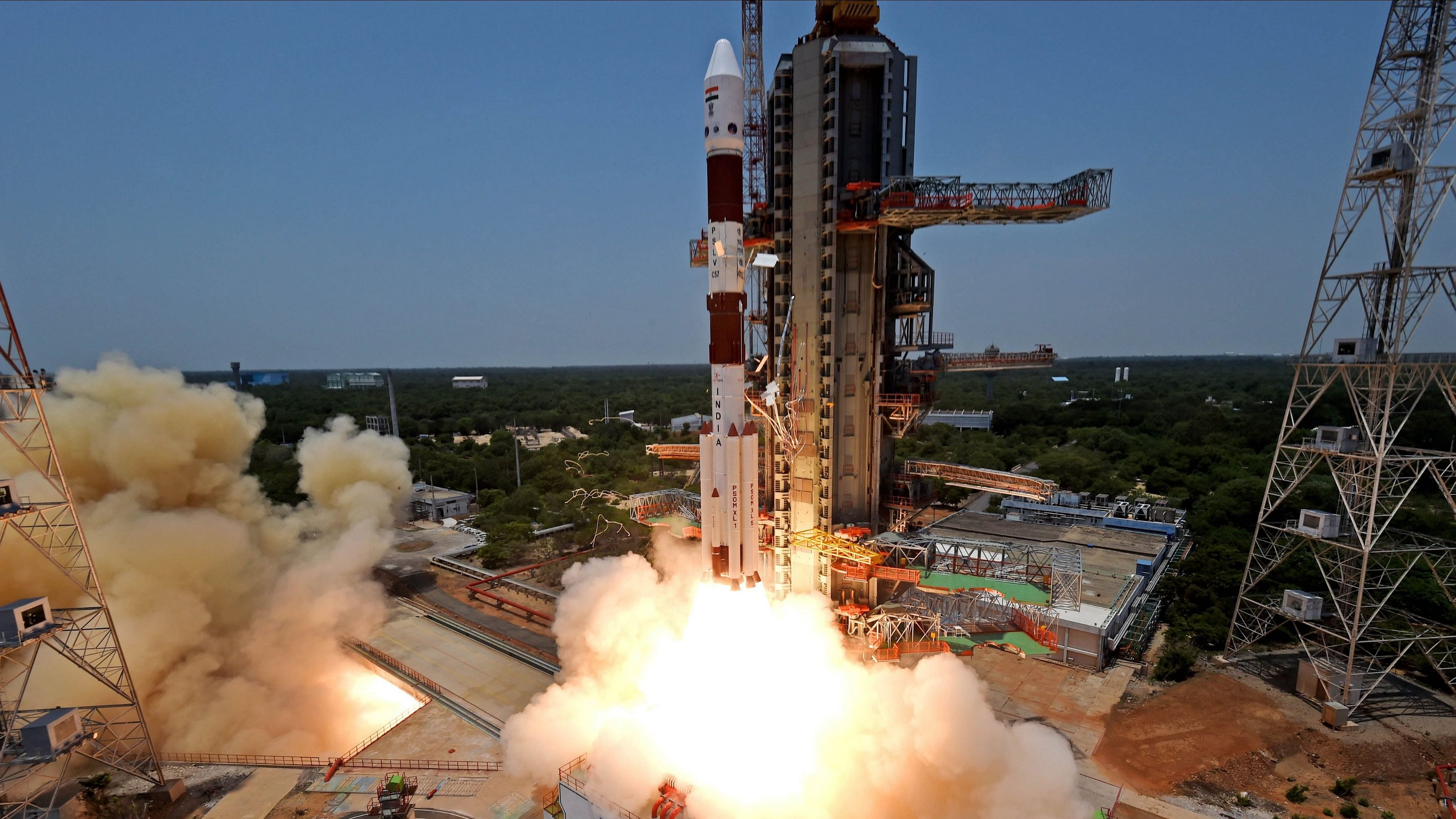
Representative image.
Credit: PTI Photo
Bengaluru: Aditya-L1 and Chandrayaan-2 have recorded and analysed signatures of the powerful solar storm that impacted earth last week, the Indian Space Research Organisation (ISRO) said on Tuesday.
Triggered by the highly active sunspot region AR13664, the geomagnetic storm – the most intense since 2003 – peaked on the morning of May 11 and caused disruptions to communication and GPS systems.
The Solar Wind Ion Spectrometer (SWIS), part of the Aditya Solar wind Particle EXperiment (ASPEX) payload on Aditya-L1 – India’s first space-based observatory to study the sun – captured the enhancement of the alpha particle and proton flux of the solar wind as a signature of this solar eruptive event.
The Chandrayaan-2 orbiter captured signatures of the events from the lunar polar orbit, with its Solar X-Ray Monitor (XSM) which detects X-rays emitted by the sun and its corona, the outermost region of the sun’s atmosphere.
Multiple X-class (most impactful) solar flares and Coronal Mass Ejections (CMEs) of charged particles and magnetic fields have hit the earth over the past few days and more events are expected over the next few days. ISRO noted that the flares and CMEs have had “severe effects” over high latitudes where diversions of trans-polar flights are being reported.
Being at lower latitudes, India has not reported widespread outages.
The XSM made observations on the solar X-ray flux and the large solar flares and tracked enhanced concentration of local charged particles from May 9.
ISRO said overall operations of the 30 geostationary orbit spacecraft were normal. None of the Earth Observation satellites visible from ISRO’s ground stations had any upsets or latch-ups, it said. Orbital decay – the gradual decrease of distance between two orbiting bodies – of all the satellites increased by five to six times compared to the nominal value on May 11, the space agency said.
Ground observations from Thumba in Thiruvananthapuram recorded a “sharp enhancement” in the Total Electron Content values – over 100% increase compared to May 9 and 10.